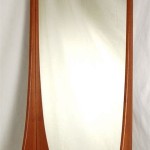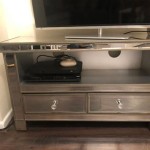```html
How To Make Two TVs Mirror Each Other
Mirroring, or displaying the same content simultaneously, on two separate televisions can be a useful setup for various scenarios. These scenarios range from home entertainment, such as watching a movie in multiple rooms, to commercial applications, such as displaying information in waiting rooms, showrooms, or digital signage. Achieving this mirroring effect typically involves understanding the available connection options and selecting the method best suited for the specific television models and desired level of complexity.
The process of mirroring two televisions requires a source device containing the content to be displayed. This source can be a set-top box, a Blu-ray player, a computer, or any other device capable of outputting video and audio. The signal from this source needs to be split and distributed to both televisions, ensuring they both receive an identical stream of information. Various hardware and software solutions exist to accomplish this, each with its own advantages and limitations.
Understanding Connection Types and Limitations
Before attempting to mirror televisions, it is essential to understand the different types of connections available on each television. The most common connections include HDMI, Component Video, Composite Video, and, in older televisions, RF coaxial cable. HDMI is the preferred connection method as it supports high-definition video and digital audio through a single cable. Component video uses three separate cables for video (Y, Pb, Pr) and two for audio (left and right). Composite video uses a single yellow RCA connector for video and two for audio. RF coaxial cable carries both video and audio but offers the lowest quality compared to the other options.
The capabilities of each connection type influence the quality of the mirrored image. HDMI allows for the highest resolution and clarity, while older analog connections, like composite video, will result in a noticeably lower picture quality. When selecting a mirroring method, prioritizing HDMI connectivity will ensure the best possible viewing experience on both televisions, provided both televisions are equipped with HDMI ports.
Furthermore, understanding the limitations of cable lengths is crucial. HDMI cables, for example, can experience signal degradation over longer distances. While there are ways to mitigate this, such as using HDMI repeaters or active HDMI cables, it is essential to consider the physical distance between the source device and the televisions when planning the setup. Exceeding the recommended cable length can lead to a poor image quality or a complete loss of signal.
Methods for Mirroring Two TVs
Several methods can be used to mirror two televisions, each with its own level of complexity and cost. These methods typically involve using a splitter, wireless transmission, or specialized hardware designed for video distribution.
HDMI Splitter: An HDMI splitter is a device that takes a single HDMI input and outputs the same signal to multiple HDMI outputs. To use an HDMI splitter, the source device is connected to the splitter's input, and two HDMI cables are run from the splitter's outputs to the two televisions. This is a relatively simple and straightforward method for mirroring televisions, especially when the televisions are located close to each other. HDMI splitters are readily available and offer a cost-effective solution for basic mirroring setups. However, it is crucial to select an HDMI splitter that supports the desired resolution and features, such as 4K or HDR, to ensure the televisions can display the content at its full potential. Some HDMI splitters may also require an external power source to operate correctly.
Wireless HDMI Transmitter/Receiver Kits: For situations where running cables between the source and televisions is impractical or undesirable, a wireless HDMI transmitter/receiver kit offers a cable-free solution. The transmitter is connected to the source device's HDMI output, and the receiver is connected to the television's HDMI input. The transmitter wirelessly transmits the HDMI signal to the receiver, which then displays it on the television. Two receiver units are needed if the end user wants to mirror the signal to two televisions. While this method eliminates the need for physical cables, it is generally more expensive than using an HDMI splitter. The performance of wireless HDMI kits can also be affected by interference from other wireless devices or obstacles between the transmitter and receiver. It is important to choose a kit with a strong and reliable wireless connection to ensure a stable and high-quality video transmission.
Distribution Amplifier: A distribution amplifier (DA) is a more robust solution designed for distributing video and audio signals over longer distances and to multiple displays. It typically supports various input and output formats, including HDMI, component video, and composite video. DAs often include features such as signal amplification and equalization to compensate for signal loss over long cable runs. A DA can be used to split the signal from the source to two (or more) televisions. The source device is connected to the DA's input, and cables are run from the DA's outputs to the televisions. DAs are commonly used in commercial settings where reliable and high-quality video distribution is essential. They are generally more expensive than HDMI splitters but offer greater flexibility and performance. Users may need to configure the DA to support the specific resolution, aspect ratio, and audio format being used.
Considerations for Audio
In addition to video, audio is also an important aspect of mirroring televisions. The method used to mirror the video signal should also ensure that the audio signal is properly distributed to both televisions. HDMI carries both video and audio signals, so if an HDMI splitter or wireless HDMI kit is used, the audio will typically be mirrored along with the video. However, if using component video or composite video connections with separate audio cables, it is important to ensure that the audio signal is split and connected to both televisions. An audio splitter can be used to split the audio signal from the source to the two televisions.
Another consideration is the audio output configuration of the source device. Some devices may offer multiple audio output options, such as HDMI, optical, or analog. The appropriate output should be selected based on the capabilities of the televisions and the mirroring method being used. In some cases, it may be necessary to adjust the audio settings on the source device or the televisions to ensure that the audio is being output correctly on both displays. For example, if one television has built-in speakers and the other is connected to an external sound system, it may be necessary to configure the source device to output audio to both simultaneously, or manually calibrate one device. Some televisions have a time delay setting to sync one’s audio with the other.
When using wireless HDMI kits, it is important to check if the kit supports audio transmission as well as video. Not all wireless HDMI kits include audio support, and a separate audio connection may be required. If facing a situation where one wants to use an audio from an external audio device, one must consider an audio extractor that can be paired to the video source. In circumstances where audio from a streaming device needs to be pushed to two TVs, the best way would be to use any device that allows for use of audio delay for both TVs, and use HDMI splitter for both televisions to synchronize audio and video.
```Is There A Way To Make 2 Tvs Play The Same Thing At Once Quora

Man Cave Ideas Two Tvs Side By

How To Make A Mirror Tv Step By Instructions
Is There A Way To Make 2 Tvs Play The Same Thing At Once Quora

Bathroom Tv Mirror Faq

How To Wirelessly Screen Mirror A Windows Pc Multiple Apple Tvs

Can You Mirror A Tv To Another Wirelessly

How To Wirelessly Screen Mirror A Mac Multiple Apple Tvs

How To Make A Mirror Tv Step By Instructions
Is There A Way To Make 2 Tvs Play The Same Thing At Once Quora








